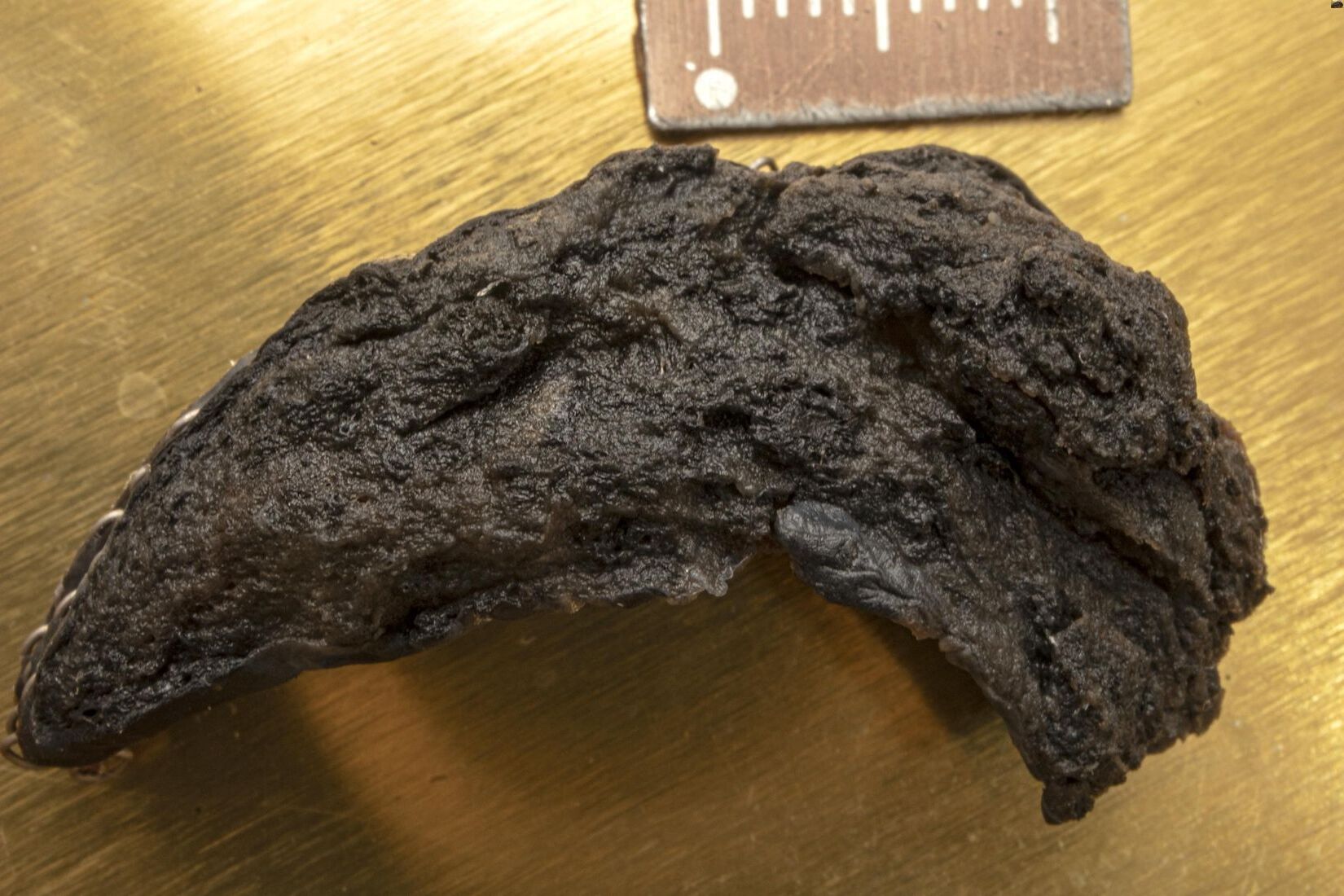
What is Coal Workers' Pneumoconiosis? Coal Workers' Pneumoconiosis (CWP), often called black lung disease, is a serious lung condition caused by inhaling coal dust over many years. This disease primarily affects coal miners and can lead to severe health issues, including chronic cough, shortness of breath, and even respiratory failure. Despite advancements in mining safety, CWP remains a significant concern, especially in regions with extensive coal mining activities. Understanding the causes, symptoms, and prevention strategies is crucial for protecting workers' health. This article delves into 25 essential facts about CWP, shedding light on its impact and the importance of preventive measures.
Key Takeaways:
- Coal Workers' Pneumoconiosis, or black lung disease, is a serious lung condition affecting coal miners due to inhaling coal dust. Prevention and early detection are crucial for protecting those at risk.
- Regular screening and limiting coal dust exposure are key in managing and reducing Coal Workers' Pneumoconiosis cases. Understanding the disease's impact and implementing safety measures are vital for miner safety.
What is Coal Workers' Pneumoconiosis?
Coal Workers' Pneumoconiosis (CWP), often called black lung disease, is a serious lung condition affecting coal miners. Understanding its causes, symptoms, and prevention can help protect those at risk.
-
Definition and Causes: CWP results from inhaling coal dust over long periods. This dust settles in the lungs, causing inflammation and scarring.
-
Prevalence: Despite safety improvements, CWP still affects about 16% of U.S. coal workers. Recent years have seen a rise in cases.
-
Types of CWP: There are two types: simple pneumoconiosis, with small lung scars, and complicated pneumoconiosis, or progressive massive fibrosis (PMF), with extensive scarring.
-
Symptoms: Symptoms develop slowly, starting with a cough, shortness of breath, and chest tightness. Severe cases can lead to chronic bronchitis and COPD.
How is Coal Workers' Pneumoconiosis Diagnosed?
Diagnosing CWP involves specific criteria and tests to ensure accurate identification and treatment.
-
Diagnosis: Diagnosis requires chest radiography showing CWP, a history of coal dust exposure, and ruling out other diseases.
-
Exposure History: Long-term exposure to coal dust is the main risk factor. Underground miners face higher risks due to dust concentration.
-
Occupational Hazards: Miners also encounter silica dust, which can cause silicosis. Combined exposure increases CWP risk.
Global and Historical Context of CWP
CWP is a global issue with a long history, affecting miners worldwide and prompting various safety measures.
-
Global Impact: In 2013, CWP caused around 25,000 deaths globally, remaining a major occupational health concern.
-
Australian Perspective: Australia lacks mandatory CWP reporting, but recent cases highlight the need for better exposure control and screening.
-
Historical Context: The first CWP case was reported in 1831, showing the disease's long-standing presence despite safety advancements.
Screening and Prevention Strategies
Effective screening and preventive measures are crucial in managing and reducing CWP cases among coal workers.
-
Screening Programs: Regular screening helps detect early-stage CWP, preventing progression to severe forms like PMF.
-
Prevention Strategies: Limiting coal dust exposure is key. Enforcing standards like those from OSHA is essential.
-
International Standards: Harmonizing exposure limits globally ensures consistent worker protection. National screening programs are also vital.
Radiological Assessment and Treatment
Radiological assessments and treatment options play a significant role in managing CWP and improving patients' quality of life.
-
Radiological Assessment: Using the ILO International Classification of Radiographs of Pneumoconioses standardizes chest X-ray and CT scan interpretations.
-
Treatment: No treatment reverses coal dust damage. Pulmonary rehabilitation, oxygen therapy, and managing related conditions can help.
Complications and Economic Impact
CWP can lead to severe complications and has a significant economic impact, affecting both healthcare costs and workers' lives.
-
Complications: Severe CWP can cause respiratory failure and premature death. It also contributes to chronic bronchitis and emphysema.
-
Economic Impact: Beyond healthcare costs, CWP affects productivity, disability benefits, and emotional well-being of workers and families.
Research and Data on CWP
Ongoing research and data collection are essential for understanding CWP and improving safety standards.
-
Research and Data: Studies like the Pneumoconiosis Field Research in the UK support stricter airborne dust standards in coal mines.
-
US Research Findings: A 2023 study found an average of 4.34 CWP cases and 3.44 deaths per county in the U.S., with higher rates in Appalachia.
-
Undercounting Cases: Low output from health surveillance programs and slow compensation approvals may lead to undercounted cases.
Progressive Massive Fibrosis and Public Health Implications
Understanding PMF and its public health implications is crucial for addressing the severe forms of CWP.
-
Progressive Massive Fibrosis (PMF): PMF involves extensive lung scarring and can be fatal, highlighting the need for early detection and prevention.
-
Years of Potential Life Lost: From 1999-2016, the mean years of potential life lost per CWP decedent increased from 8.1 to 12.6 years.
-
Public Health Implications: Preventing hazardous coal dust exposure, early disease detection, and providing medical care are essential for reducing CWP deaths.
Occupational Safety Measures and Technological Advancements
Implementing safety measures and understanding technological impacts can help reduce CWP cases.
-
Occupational Safety Measures: Regular dust monitoring, personal protective equipment (PPE), and improved ventilation systems are crucial for miner safety.
-
Advancements in Technology: Modern mining technology and changes in coal's mineral content may increase CWP prevalence, necessitating updated safety protocols.
Final Thoughts on Coal Workers' Pneumoconiosis
Coal Workers' Pneumoconiosis, or black lung disease, remains a significant health issue for coal miners worldwide. Despite advancements in safety measures, the disease continues to affect many workers, leading to severe health complications and even premature death. Understanding the causes, symptoms, and prevention strategies is crucial for mitigating its impact. Regular screening, strict dust exposure limits, and improved safety protocols can help protect workers. While there's no cure, early detection and proper management can slow disease progression and improve quality of life. The economic and emotional toll on affected individuals and their families underscores the need for ongoing research and robust prevention efforts. Protecting coal workers' health should remain a top priority, ensuring they can work safely without risking their lives.
Frequently Asked Questions
Was this page helpful?
Our commitment to delivering trustworthy and engaging content is at the heart of what we do. Each fact on our site is contributed by real users like you, bringing a wealth of diverse insights and information. To ensure the highest standards of accuracy and reliability, our dedicated editors meticulously review each submission. This process guarantees that the facts we share are not only fascinating but also credible. Trust in our commitment to quality and authenticity as you explore and learn with us.


